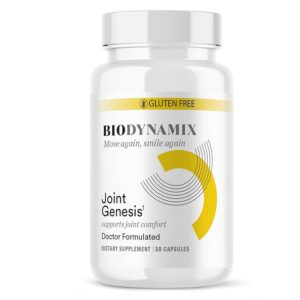Walk down the supplement aisle at any store, and you’ll see rows of shiny bottles promising everything from boosted energy to joint relief to rapid fat loss. But how do you know if what’s on the label matches what your body actually needs? The truth is, not all supplements are created equal. Some contain clinically effective doses, while others are sprinkled with tiny amounts of trendy ingredients just to look impressive on the label—a tactic often called “fairy dusting.”
This guide is your supplement label decoder. By the end, you’ll know how to read labels like a pro, spot under-dosed formulas, and choose products that actually deliver results.
Why Supplement Labels Can Be Misleading
Supplement companies know that consumers are drawn to buzzwords: “superfoods,” “detox,” “clinically studied,” or “scientifically proven.” But without learning how to decode the ingredient list, it’s easy to get tricked by marketing rather than science.
Common issues include:
- Fairy dusting: Adding minuscule amounts of expensive or trendy ingredients so they can list them on the label without real benefits.
- Proprietary blends: A mix of ingredients listed together with only the total weight shown, hiding the actual amount of each ingredient.
- Overhyped claims: Phrases like “maximum strength” or “doctor recommended” that don’t guarantee effectiveness.
- Unnecessary fillers: Extra ingredients that don’t provide health benefits.
Understanding how to spot real doses versus label fluff is the key to making smart supplement choices.
Step 1: Look for the Active Ingredients
Every supplement contains “active” ingredients (the ones meant to provide benefits) and “inactive” ones (like binders or capsule shells). The first step in decoding a label is identifying the active ingredients.
Example: A joint health supplement may list glucosamine, chondroitin, turmeric, or collagen as its actives. These are the ingredients you need to evaluate for dosage.
Step 2: Compare Dosages to Clinical Research
Here’s where most labels reveal the truth. Science-backed dosages are usually very specific, and you can compare them against what’s listed on the bottle.
For example:
- Glucosamine sulfate: Effective dose ~1,500 mg per day.
- Turmeric (curcumin): Effective dose ~500–1,000 mg with black pepper extract for absorption.
- Omega-3s (EPA & DHA): Effective dose ~1,000 mg combined per day.
- Magnesium: Effective dose ~300–400 mg daily for most adults.
If your supplement only provides a fraction of these amounts (say 50 mg of turmeric), it’s likely fairy dusted—not enough to have real effects.
Step 3: Watch Out for Proprietary Blends
“Proprietary blend” may sound scientific, but it often hides weak dosages. For example:
Joint Relief Blend – 1,200 mg (Glucosamine, Turmeric, MSM, Collagen, Hyaluronic Acid)
Looks impressive, right? But without knowing how much of each ingredient is included, you can’t confirm if the product contains enough of the important actives. A good rule: avoid blends that don’t list individual amounts.
Step 4: Check the Order of Ingredients
In supplements (just like in food), ingredients are often listed in order of weight. If a powerful ingredient like turmeric is listed last, it may be present in tiny amounts—again, fairy dust territory.
Step 5: Look for Standardization
Plant extracts often vary in potency. A high-quality label will show the standardized amount of the active compound.
For example:
- Turmeric (Curcuma longa) root extract standardized to 95% curcuminoids is much stronger and more consistent than just “turmeric powder.”
- Green tea extract standardized for EGCG ensures you’re getting the active antioxidant.
Without standardization, the effectiveness of the supplement is questionable.
Step 6: Verify Third-Party Testing
Trustworthy brands often include seals like USP Verified, NSF Certified, or Informed-Choice. These indicate the product has been independently tested for purity and accuracy of labeling. Supplements without third-party testing may contain inaccurate dosages—or even contaminants.
Real Doses vs. Fairy Dust: Quick Examples
Here are a few common supplements to illustrate the difference:
- Multivitamins
- Real dose: Vitamin D3 at 1,000–2,000 IU daily.
- Fairy dust: 50 IU of Vitamin D hidden in a blend.
- Pre-Workout Powders
- Real dose: 3–6 grams of beta-alanine, 6–8 grams of citrulline malate.
- Fairy dust: 500 mg of citrulline in a “pump matrix.”
- Joint Support Supplements
- Real dose: 1,500 mg glucosamine + 1,200 mg chondroitin.
- Fairy dust: 50 mg of turmeric in a long ingredient list.
How to Choose High-Quality Supplements
When shopping, use this quick checklist:
- ✅ Look for individual dosages (not just blends).
- ✅ Compare doses to clinical studies.
- ✅ Seek standardized extracts.
- ✅ Prefer third-party tested brands.
- ✅ Watch out for too-good-to-be-true claims.
If a label feels vague or hides details, it’s usually a red flag.
The Bottom Line
Supplements can absolutely support your health when chosen wisely, but not all products deliver what they promise. By learning how to decode supplement labels, you’ll avoid falling for fairy dusting tricks and instead focus on products with clinically effective dosages.
Next time you pick up a bottle, ask yourself: Is this a real dose, or just a sprinkle of hype? The answer could save you money—and help you find supplements that truly make a difference.


